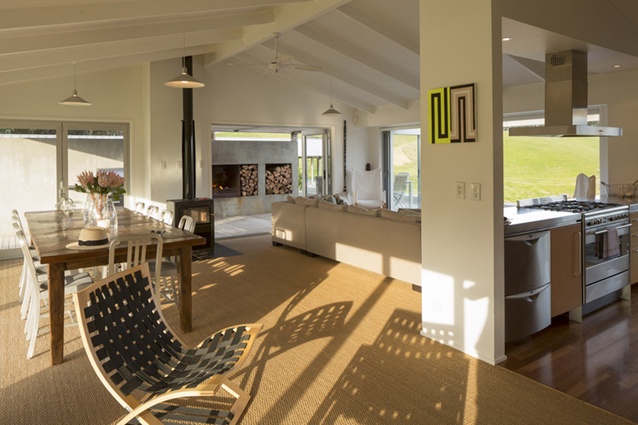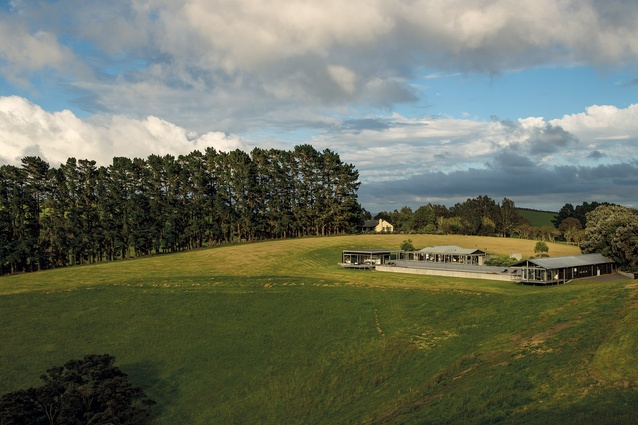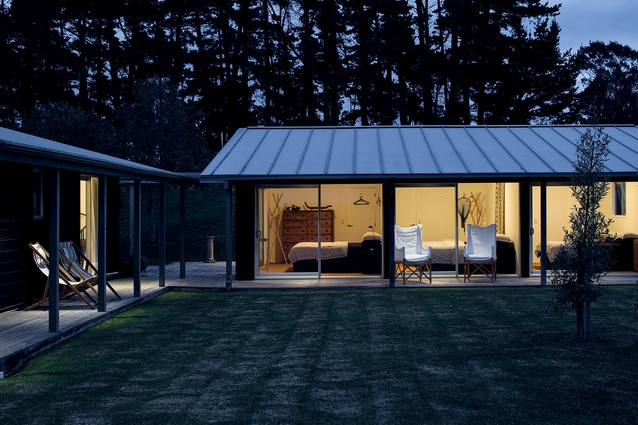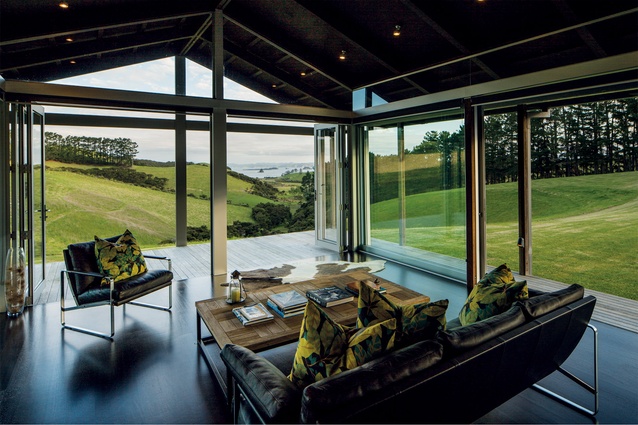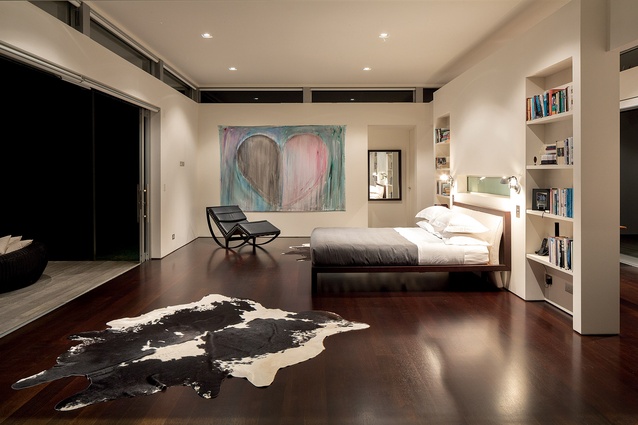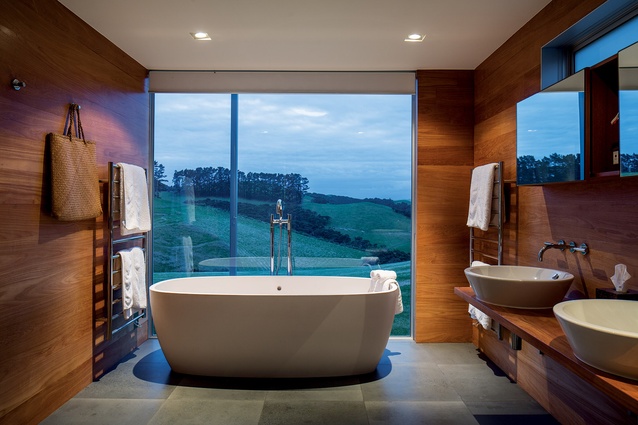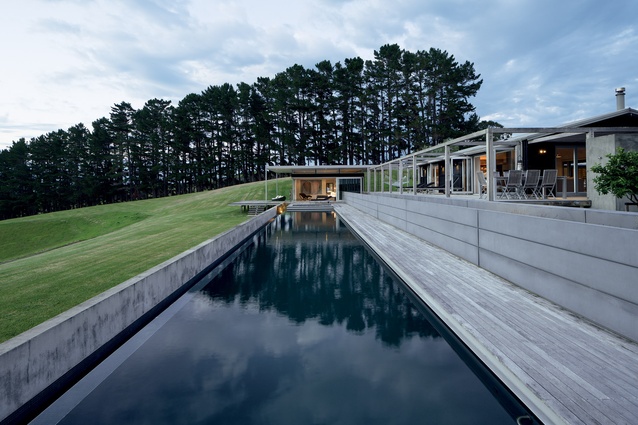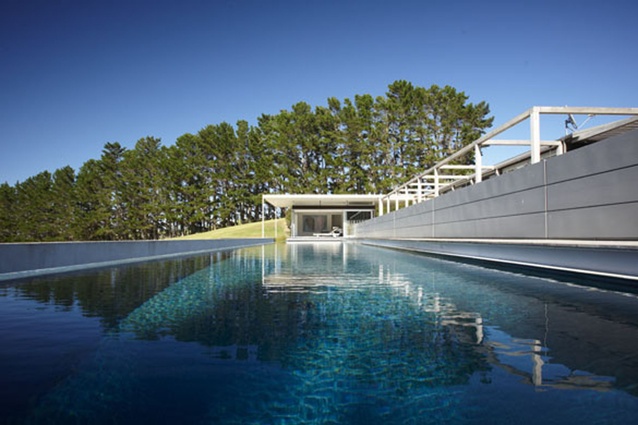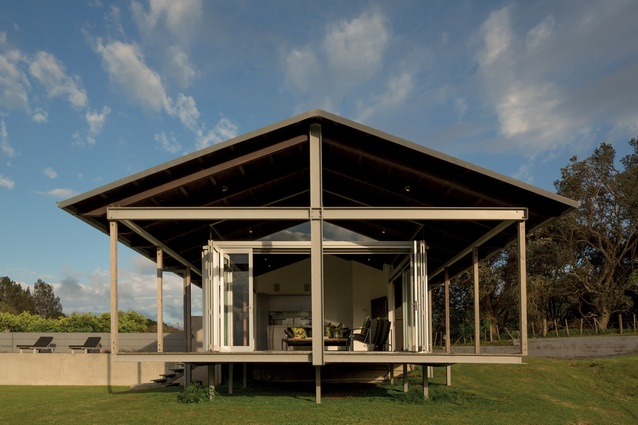Houses revisited: Mountain landing house
From the sky, the cluster of buildings that makes up a family bach in Northland appears as a cruciform — an intentional design decision triggered by the commonality of moving about the area by helicopter.
Project director, architect Kerry Mason of MAP, says the four buildings that form the Mountain Landing bach were designed to sit delicately on the land but make a bold statement from above. “The buildings make a statement in their arrangement, not in their form,” Mason says.
This is due in part to the fact that the original 1980s fibre cement-clad worker’s cottage on the site was retained and refurbished and the additional structures were designed not to dwarf or dominate the original dwelling. As a result, the palette is restrained in both material and colour and the buildings are low-lying, simple structures.
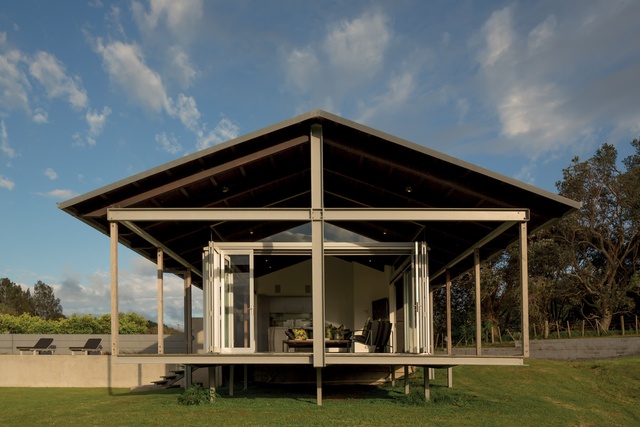
As the owners had four adult sons with partners and growing families when the design was first contemplated, the bach had to accommodate private areas for different family groups as well as large central living areas.
The first major addition to the property started seven years ago when the original double garage was converted into three bedrooms. As it was at right angles to the cottage, a central courtyard was formed between the two buildings.
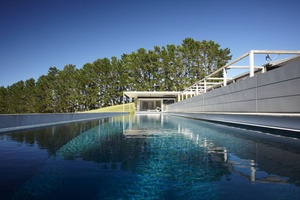
Adjunct to this original dwelling and garage conversion, a separate master bedroom wing sits at the southern end of a 20-metre lap pool — in the space where, conventionally, a pool house might be sited — commanding unobscured views over a 3km stretch of rolling countryside, which leads down to the coast. At the far end of the pool, is situated a second guest wing complete with separate garaging.
The three new structures act as a shelter of sorts, protecting the modest original dwelling, which now sits in the centre of the cluster. While the new guest wing and converted garage echo the original structure with their gabled roofs, the master suite is modernist in its box-like form. “Essentially it’s a flat-ceilinged, white gallery. It is uncompromisingly simple and pure in its cubic form — this room is about the views,” Mason says.
All the buildings, including the cottage, are clad in stained cedar while the roofs are zinc Eurotray roofing, making it difficult to ascertain the new from the old.
Despite the expansive areas and four separate buildings that make up the entirety of this 500m2 property, it retains a distinctly ‘bachy’ feel, says Mason.
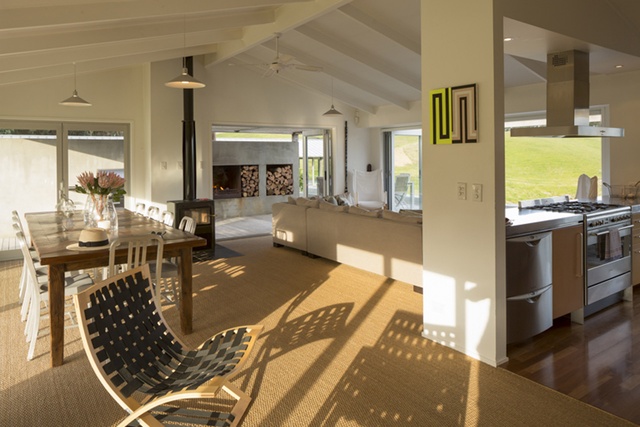
“The form has been deliberately kept as non-urban as possible, with a simple, casual palette of materials. Similarly, rather than the buildings being connected via internal corridors, hardwood decking, which aids with the relaxed, coastal feel, was chosen as the way to link the structures.”
To ensure they were aligned with the cottage, the new buildings sit on an extended steel and timber structure, elevating them above the natural form of the land and preferring the notion of the buildings as ‘floating’ in their environs.
Inside, apart from the sparse white master wing, the guest rooms and main living area in the cottage (which has been entirely refurbished) express the form and nature of the structures, with exposed timber rafters offset against simple white surfaces. “While they are sparse, there is a richness of timber in the exposed structure that gives them character.”
Click here to see more Houses Revisited. And sign up to our email newsletters to receive Houses Revisited straight to your inbox.
Note: These are stories from our archives and, since the time of writing, some details may have changed including names, personnel of specific firms, registration status, etc.

